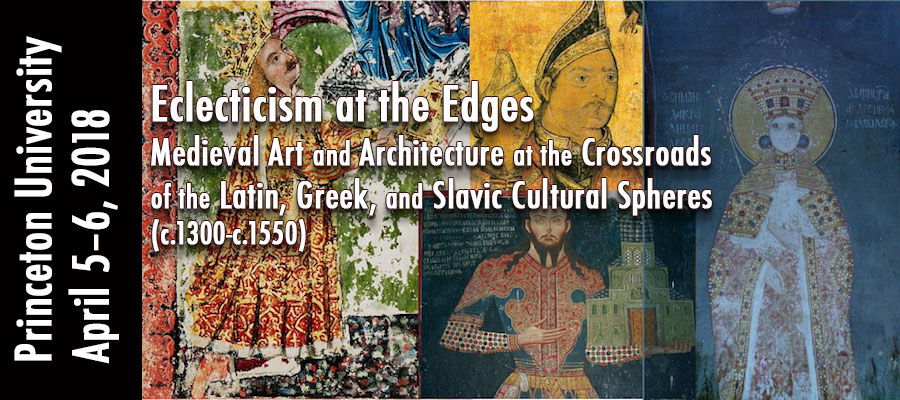Eclecticism at the Edges: Medieval Art and Architecture at the Crossroads of the Latin, Greek, and Slavic Cultural Spheres (c.1300-c.1550), Princeton University, April 5–6, 2019
In response to the global turn in art history, this two-day symposium explores the temporal and geographic parameters of the study of medieval art, seeking to challenge the ways we think about the artistic production of Eastern Europe. Serbia, Bulgaria, and the Romanian principalities of Wallachia, Moldavia, and Transylvania, among other centers, took on prominent roles in the transmission and appropriation of western medieval, byzantine, and Slavic artistic traditions, as well as the continuation of the cultural legacy of Byzantium in the later centuries of the empire, and especially in the decades after the fall of Constantinople in 1453.
This symposium will be the first such initiative to explore, discuss, and focus on the art, architecture, and visual culture of regions of the Balkans and the Carpathians (c.1300-c.1550). We aim to raise issues of cultural contact, transmission, and appropriation of western medieval, byzantine, and Slavic artistic and cultural traditions in eastern European centers, and consider how this heritage was deployed to shape notions of identity and visual rhetoric in these regions from the fourteenth through the sixteenth centuries. This event will offer a comparative and multi-disciplinary framework, ranging from art history to archeology and from material culture to architectural history. We aim to create a platform where scholars at various stages of their careers can discuss their research and engage in dialogue regarding the specificities but also the shared cultural heritage of these regions of Eastern Europe that developed eclectic visual vocabularies and formed a cultural landscape beyond medieval, byzantine, and modern borders.
Papers could address topics that include, but are not limited to:
- How cross-cultural contact facilitated the transfer, appropriation, and transmission of ideas and artistic traditions across geographical and temporal boundaries in Eastern Europe (c.1300-c.1550)
- Artistic and iconographic developments as expressions of particular social, political, and ecclesiastical circumstances and dialogues in the Balkans and the Carpathians
- The intentions and consequences of diplomatic missions and dynastic marriages in the visual agenda of eastern European centers
- Workshop practices and traveling artists beyond medieval political and religious borders
- Patronage and new constructs of identity before and after 1453
Funds will be available to defray the cost of travel and accommodations for participants whose papers are accepted in the Symposium.
So far, this event is supported in part by the International Center of Medieval Art, the Society of Historians of East European, Eurasian, and Russian Art and Architecture, as well as The Index of Medieval Art at Princeton University.
Organizers
Alice Isabella Sullivan, Ph.D. (University of Michigan)
Maria Alessia Rossi, Ph.D. (The Index of Medieval Art, Princeton University)
